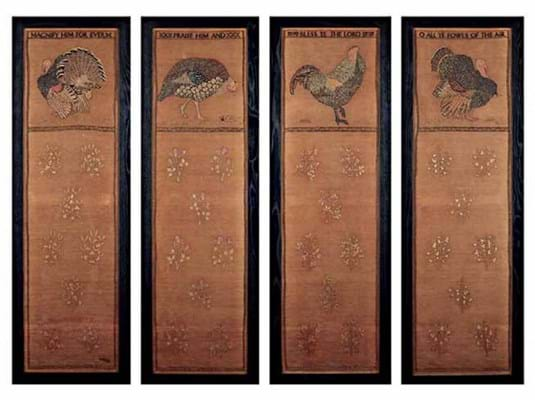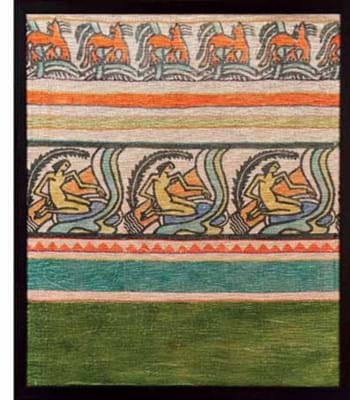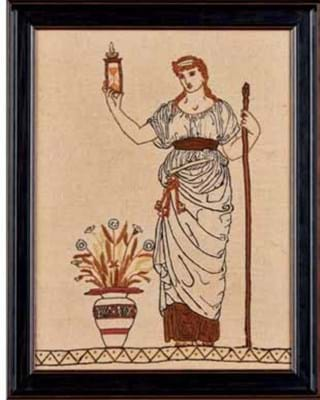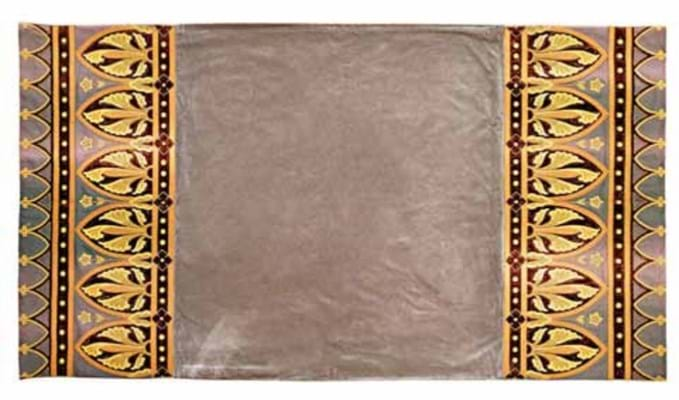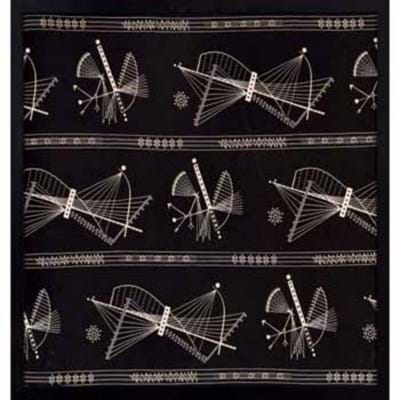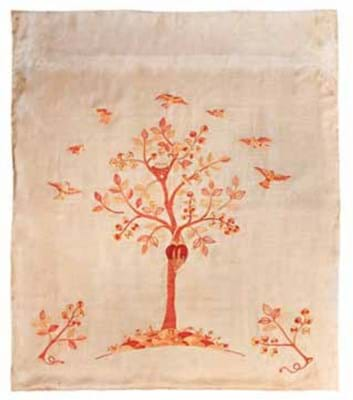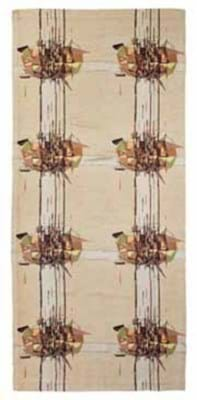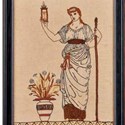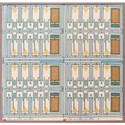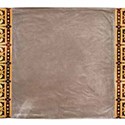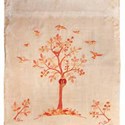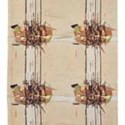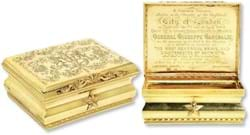Collecting 19th and 20th century textiles has been a 50-year passion for Paul Reeves.
The influential dealer in British decorative arts started his odyssey as a successful clothes designer in London’s Fulham Road in the Swinging Sixties.
He continued after opening his first antiques shop in Battersea Bridge Road in 1976, through his flagship years at 32 Kensington Church Street and latterly at his home and showroom in Cirencester.
His vision for the Textiles as Art sale, bringing together a mass of representative material for sale at Lyon & Turnbull (25% buyer’s premium) in Edinburgh on February 23, was to redress some of the market and curatorial imbalance that can exist between textiles and other more ‘serious’ forms of the applied arts.
And it worked. With only a handful of unsolds, the collection, spanning Berlin woolwork of the 1840s, embroideries from the Glasgow School and machine and hand-made textiles by leading lights of the art and design movement from Morris to Dufy, totalled £231,600 with premium.
“My aim with the sale was to establish textiles as an art form in their own right,” he said. “The results speak for themselves and I feel completely vindicated in deciding to hold the sale.”
Many of the choice lots came from the field with which Reeves is usually associated.
The top price was bid for a 5ft 10in x 5ft 1in (1.77 x 1.54m) crewelwork panel which formed part of Sir Robert Lorimer’s furnishings for Earlshall Castle in Fife.
These embroideries were worked by Earlshall owner Robert Mackenzie’s wife Jessie and her friends in 1893 and remained at Earlshall until the contents were sold in 1983.
The panel, depicting The Tree of Life, worked in russet silk embroidery on a natural linen ground, included a hand-written label reading Woven by JRS Mackenzie in 1893. It sold just below hopes at £17,000.
A 20 x 15in (49 x 37cm) wool embroidery allegorical of Time was among the designs created by Walter Crane for Alcestis, his first blockprinted paper frieze produced by wallpaper firm Jeffrey & Co from 1876. Alcestis was the mythical queen of Thessaly, wife of King Admetus, who came to personify the devoted, selfless woman and wife in ancient Greece.
Similar embroidered classical figures were incorporated into a demi-lune cabinet exhibited by the Royal School of Needlework at the Philadelphia International Centennial Exhibition in 1876 – a cabinet once sold by Reeves and now in the collection of The Huntington Library, California. Modestly pitched at £300-500, this panel took £4200.
Among the lots connected with Christopher Dresser were a 7ft 6in x 4ft 2in (2.29 x 1.28m) embroidered applique table runner, c.1870, worked to each end with an anthemion band in gold and black thread (estimate £600-800) and a 22in (58cm) square panel of the designer’s repeating motif of peacock feathers known as Hera (estimate £300-500). They sold at £3200 and £2200 respectively.
Dresser later produced Hera as a printed cotton sold through Liberty & Co but this framed panel was an earlier version, made in a woven silk fabric by William Fry of Dublin c.1876.
Versatile freelancer
Like Dresser, Charles Voysey was a prolific and versatile freelancer and textiles were a lucrative part of his repertoire. He was under contract to produce a number of designs per year for Edinburgh weaver Alexander Morton.
In a period frame, a 20 x 15in (51 x 38cm) panel of Cockpit fabric c.1918 with a repeating pattern of harebells, grapes and opposed birds sold for £4400 (estimate £400-600).
Estimated at £800-1200 but sold at £8200 was a 2ft 3in x 23in (68 x 58cm) framed panel of silk crepe printed with a hand-blocked design of stylised foxes and kneeling figures by Wyndham Lewis.
It was made at either The Omega Workshops (established in 1913) or The Rebel Art Centre set up as a workshop in 1914.
The same Vorticist design is visible on an embroidered and block-printed silk robe created by Lewis in 1914.
Reeves often uses textile panels in his interior design commissions but buying fragments of furnishing fabric can require a little vision.
Presentation at the Broughton Place saleroom helped. John Mackie, an L&T director, said: “All the pieces were offered in a manner which makes them eminently usable and ready to hang.
Highlights from the Paul Reeves collection of textiles sold by Lyon & Turnbull in Edinburgh on February 23.
“Many were framed and others mounted to display with great effect in either a modern or period setting.”
The later material particularly benefited from this treatment. A framed Modernist screen printed design with a repeating still-life pattern ascribed to once-legendary scarf brand Ascher c.1940 sold for £4400 (estimate £1000-1500). A Heal & Co screen-printed cotton panel c.1956, with the inscription to the selvedge Nautilus by Mary Warren, sold at £1300 (estimate £300-500).
Post-war design
In the post-war era, as manufacturers looked to cater for design-conscious British homeowners and properties with larger windows, artists were engaged to produce curtain fabric.
From 1960 Alan Munro Reynolds (1926-2014) produced a series of designs for Edinburgh Weavers in Carlisle. Among the best known is Crystalline Image c.1962. A 4ft 5in x 3ft 10in (1.34 x 1.18m) panel sold here at £2800 (estimate £600-800) – more than twice the £600 bid at the same rooms in August 2014 for a piece roughly twice the length.
Despite suffering a nadir between the world wars, the status of embroidery was also raised from a genteel hobby to an art form in the post-war era.
Keen bidding greeted Harvest Moon, a 3ft x 2ft 10in (90 x 85cm) embroidered appliqué panel worked by Constance Howard (1910-2000).
An exhibitor at the Festival of Britain in 1951, Howard later proved a great champion of embroidery.
She was the principal lecturer on the subject at Goldsmiths College, where a study collection in her name numbers more than 2000 items, and the author of the four-volume study, Twentieth Century Embroidery in Great Britain. This lively example of her other work c.1960 sold for £2900 (estimate £800-1200).


